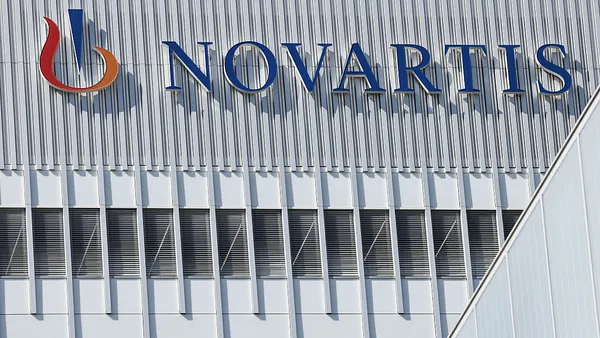Alternatives to the integrated pharmaceutical company business model are taking hold as smaller players contribute to the industry’s value chain. Some of these newer players are focusing on specific areas, such as development, while others are creating hybrid models. We asked PharmaVOICE readers whether the era of the do-all-things pharmaceutical company is coming to an end, or will multinational, multidimensional companies continue to dominate the landscape. (Editor’s Note: Please see related article, A Model for Success, on page 44 of this issue.) Big, bigger, biggest I think that “big pharma” will only get bigger, and that the specialty companies will eventually be bought out. Deborah Jones King VP, Sales and Marketing Empatha Inc. A global network The pharmaceutical industry is not immune to the economic forces that are shaping the world economy. As has happened with other vertically integrated industries (steel, automobile, etc.), the pharmaceutical industry also will have to learn to partner well to continue to grow and prosper. This goes beyond obtaining new pipeline material (whether via in-licensing or M&A) for drug development, manufacturing, etc. At the end of the day, I believe that big pharma’s most valuable assets are its brands and channels. I believe that big pharma will best leverage those assets by collaborating with smaller, more specialized firms that focus on particular aspects of discovery, development, etc. This network of new therapy discovery and development will, in turn, generate better therapies more efficiently than today’s predominantly siloed approach. Doug Engfer CEO invivodata Inc. More, more, more There is no question that more and more outsourcing will take place. This is evident by the number of agencies that are establishing themselves as one-stop shopping for pharma marketing companies. As the industry consolidates, more and more companies are turning to the major agencies to handle their marketing. It is only a matter of time before the industry outsources almost all facets of the business. Eventually pressures will result in lower profit margins, which will ultimately cause a reduction in staff and force companies to cut back on their purchases and outsource the majority of their functions. This trend is already happening in the smaller companies. They continue to look to alternative means to market their products and the day is nearing when the majority of physicians will look to acquire significantly more information about products from the Internet. Harry C. Boghigian President Pharma Consultants LLC Jurisdictional parochialism The pharma model has been immutable for 40 years in a fast-changing, global environment on virtually all operational fronts. Pharma has vertically integrated all functions over time under the justification of intellectual property protection. In many operational areas, such as manufacturing and clinical development, the regulatory guidelines are so stringent that it is very difficult to create any competitive advantage by “owning” all of these assets and resources on the company balance sheet. It makes one wonder if this vertical integration is more of a “sheep herding” phenomenon than based upon truly strategic thinking. It certainly isn’t cost justified based upon any financial model. The primary driver of the current inefficient model seems to be the recognition-and-reward system in pharma that is directly related to the span and scope of control, ownership, and boundaries that an individual can achieve. This creates a jurisdictional parochialism that we commonly know as the “not invented here” syndrome. The result is that a huge disincentive exists in most pharma companies to outsource anything. Even if it is mandated, it is not achieved because of the reward system that has not been adjusted to reinforce outsourcing behavior. If people outsource, they lose internal resources and perceived power. Complicating this is that pharma spends very little time developing people with strong outsourcing and relationship management skills. One can but peruse any outsourcing contract to see this flaw. This learning and experience deficit renders frictional relationships with most value chain providers and only serves to reinforce the intramural pharma perception that “we can do it better ourselves.” If we simply analyze the decades of data on missed timelines, escalating costs, and high turnover, we can see that clinical development is not a core competence of the overwhelming majority of pharma companies. I believe McKinsey has it right in their 2003 analysis of the pharma industry that suggests for major pharma companies to survive, they need to focus on formulation development, manufacturing scale-up, distribution, and marketing. The industry model is predicated on patents. Since 68% of the industry new drug pipeline lies in the realm of biotechs, not major pharma, it is apparent that the economic model of the industry in general is in peril. The shift to biotechs suggests that a major redesign of traditional full-service pharma company operations is long overdue. The unfortunate reality is that it has taken the pharmaceutical industry decades to even acknowledge this emerging reality. So it is illogical to assume it will be able to react quickly to these dynamics, especially since most companies have not changed their rewards systems or development of outsourcing skills. C. Lee Jones President and CEO Essential Group Inc. Opinions May 2006 PharmaVOICE Letters States crack down on gifting to doctors could lead to a regulatory nightmare for pharmaceutical companies Pharma companies find themselves in an impossible situation — trying to define, follow, and track existing and pending legislation. — Ronald W. Buzzeo, R.Ph., Executive Chief Regulatory Officer, Dendrite International A Nightmare Scenario in the Making States are rushing to pass legislation that regulates gift giving, promotional activities, and direct marketing to doctors by pharma sales representatives. The reality of the situation is that pharma companies are facing a nightmare scenario, in which there could be 50 new and disparate reporting systems in place by 50 different government bodies. Already four states — Vermont, Maine, West Virginia, and Minnesota — as well as the District of Columbia have passed gift disclosure laws requiring pharma companies to provide detailed reporting on gifts, promotional and marketing costs, drug samples, food and entertainment, and trips and travel. Failure to report on these activities to the state can result in fines to the pharma companies of up to $10,000 per violation and, even worse for an industry under increasing scrutiny by the media, public disclosure about the violations. Minnesota actually has pending legislation that would increase the monetary penalty of violations up to $25,000. The Domino Effect: States Moving Fast In December 2005, there were 13 states considering gift disclosure bills. Today, there are 21 other states, including New York, Illinois, Pennsylvania, and New Jersey, with disclosure legislation pending. Unfortunately for pharma companies, most of the pending legislation is based on Vermont’s law, which may be the most rigid in the nation. New York is even considering publishing a guide that would show how much money in gifts and promotions each doctor receives from individual pharma companies. Another hot button for the pharma companies is drug sampling. Providing samples of prescription drugs to doctors is a tried and true method of familiarizing a doctor with a new drug. These samples are given free of charge, and those savings are passed on to patients who can most benefit from their use. Most states, so far, exempt samples as gifts — but not the District of Columbia, where it is included as gifts and need to be reported as such. It remains to be seen how other states with pending legislation will define sampling programs. Finding Answers for Pharma As one can imagine, pharma companies find themselves in an impossible situation — trying to define, follow, and track existing and pending legislation. So what can pharma companies do to protect themselves and make sure they are compliant in all 50 states? We developed some best-practice approaches that we think make sense for pharma companies to successfully navigate this new regulatory minefield. Outlined below are six practices that should be considered for full compliance: • Monitor and act on current and pending state specific regulations, • Identify the data requirements needed for state reporting and disclosure, • Integrate data from sales, marketing, and advertising, accounting and finance, and drug pricing, • Process and align the data by a single view of each practitioner, • Deliver state-level reports that meet the requirements of each state, and • Proactively monitor and track compliance with current and future state requirements. It will be up to each individual pharma company to decide how best to implement these six practices. Make no mistake, strict state regulations for gifting to doctors are now a reality, and the avalanche is coming. Pharmaceutical companies that decide to adopt a wait-and-see attitude before taking action could find themselves buried under expensive fines, state investigations, and an onslaught of complicated paperwork. Ronald W. Buzzeo, R.Ph. Executive Chief Regulatory Officer Dendrite International May 2006 PharmaVOICE
An article from











